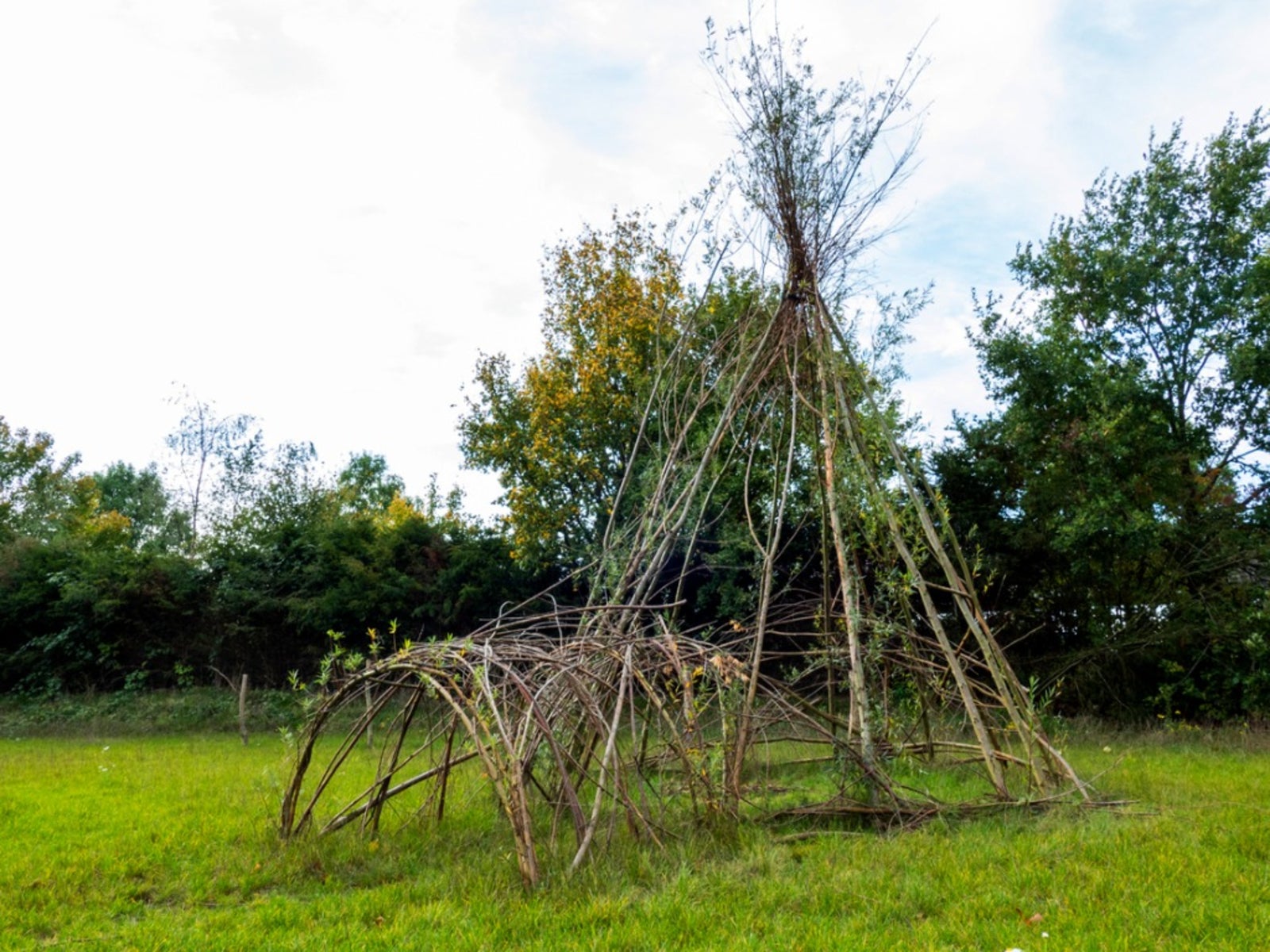Building Living Willow Structures: Tips On Willow Dome Maintenance


Getting kids to share in your passion for gardening isn't always easy. Many view it just as hot, dirty work or too educational. Planting living willow structures can be a fun project to do with kids, and they may not even notice that they are actually learning something in the process. A living willow dome can become a secret playhouse, as well as teach children how to care for and maintain living plants. You may be asking, what is a willow dome? Read more to learn about building with willow branches.
Building Living Willow Structures
A willow dome is a teepee or dome-shaped structure made from living willow whips or branches. These willow whips can be purchased online in bundles or kits. Many of these lots also come with willow dome instructions. You can also try to use strong sturdy willow whips taken from your own dormant willow trees. Be sure to use only long, sturdy whips that are pliable enough to be arched in to a structure. To make a willow dome, you will need:
- Several long, sturdy dormant willow whips
- Strong garden twine
- Weed barrier fabric
- Landscape marking paint
First, select the area where you would like to create your willow dome. The area should be large enough that a few children or adults can have room to move around in the structure. Lay out and secure the weed barrier fabric to cover the desired size of your dome’s floor. The fabric will be laid out and secured in a big square shape, with excess fabric being cut off after the structure is built. With your landscape marking paint, spray a big circular guideline where you will plant the structure’s willow whip walls. When your circle is marked out, you may begin planting your willow whips around the circle. Start by deciding where you want the willow dome doorway and how wide you would like it. On each side of this doorway, plant one to three strong but pliable willow whips. Secure these whips together at the top of the doorway with twine. Then around the marked outer circle, plant a strong, sturdy willow whip slightly diagonally, each a foot (.3 m.) apart. For example, plant the first willow whip one foot away from the already planted doorway slightly leaning to the left. Moving along your marked out circle, measure another foot away from the whip you just planted and plant a willow whip slightly leaning to the right. Continue planting willow whips in this alternating diagonal way, each one foot apart, all around the circumference of your marked out circle. The thickest, strongest willow whips in your bundle should be used for this. Once your main willow walls have been planted, you can fill in the one foot gaps, by planting the smaller, weaker willow whips vertically. This will depend on how dense and bushy you want your dome to be. Now that your walls are planted, here comes the tricky part. With as many a hands as you can get to help create your living willow structure, gently arch and weave the willow whips to create a dome or teepee like roof. Use strong twine to secure the woven structure. The top of the dome can be formed into a tidy dome shape by weaving and arching the whips or they can be just bundled together at the top in a teepee fashion. Trim off excess weed barrier fabric around the dome and water your planted playhouse well.
Willow Dome Maintenance
Your living willow structure should be treated like any new plantings. Water well immediately after planting. I always like to water any new plantings with a root stimulating fertilizer. Willows require a lot of water when establishing, so give it water every day for the first week, then every other day for the next two weeks. When the willow whips leaf out, it may be necessary to trim the outside to keep its dome or teepee shape. You may also have to do a little trimming on the inside. If your willow dome is used as a playhouse for kids or just a secret retreat for yourself, I recommend treating it with insecticide to deter ticks and other unhealthy critters from also trying to move in.
Gardening tips, videos, info and more delivered right to your inbox!
Sign up for the Gardening Know How newsletter today and receive a free copy of our e-book "How to Grow Delicious Tomatoes".
-
 Looking For Plants To Give You The Soft And Fuzzies? Try These 5 Fuzzy Leaf Plant Options
Looking For Plants To Give You The Soft And Fuzzies? Try These 5 Fuzzy Leaf Plant OptionsLovers of texture, drama, silver foliage and tactile plants will adore these special sensory garden additions. These fuzzy leaf plant options will leave you all aglow
By Susan Albert
-
 Get Ready For A Summer Of Hummers! Grow These Full Sun Hummingbird Plants and Flowers
Get Ready For A Summer Of Hummers! Grow These Full Sun Hummingbird Plants and FlowersIf you’re lucky enough to enjoy a sunny backyard, make sure you are maxing out on your pollinator opportunities and grow these full sun hummingbird plants and flowers
By Tonya Barnett